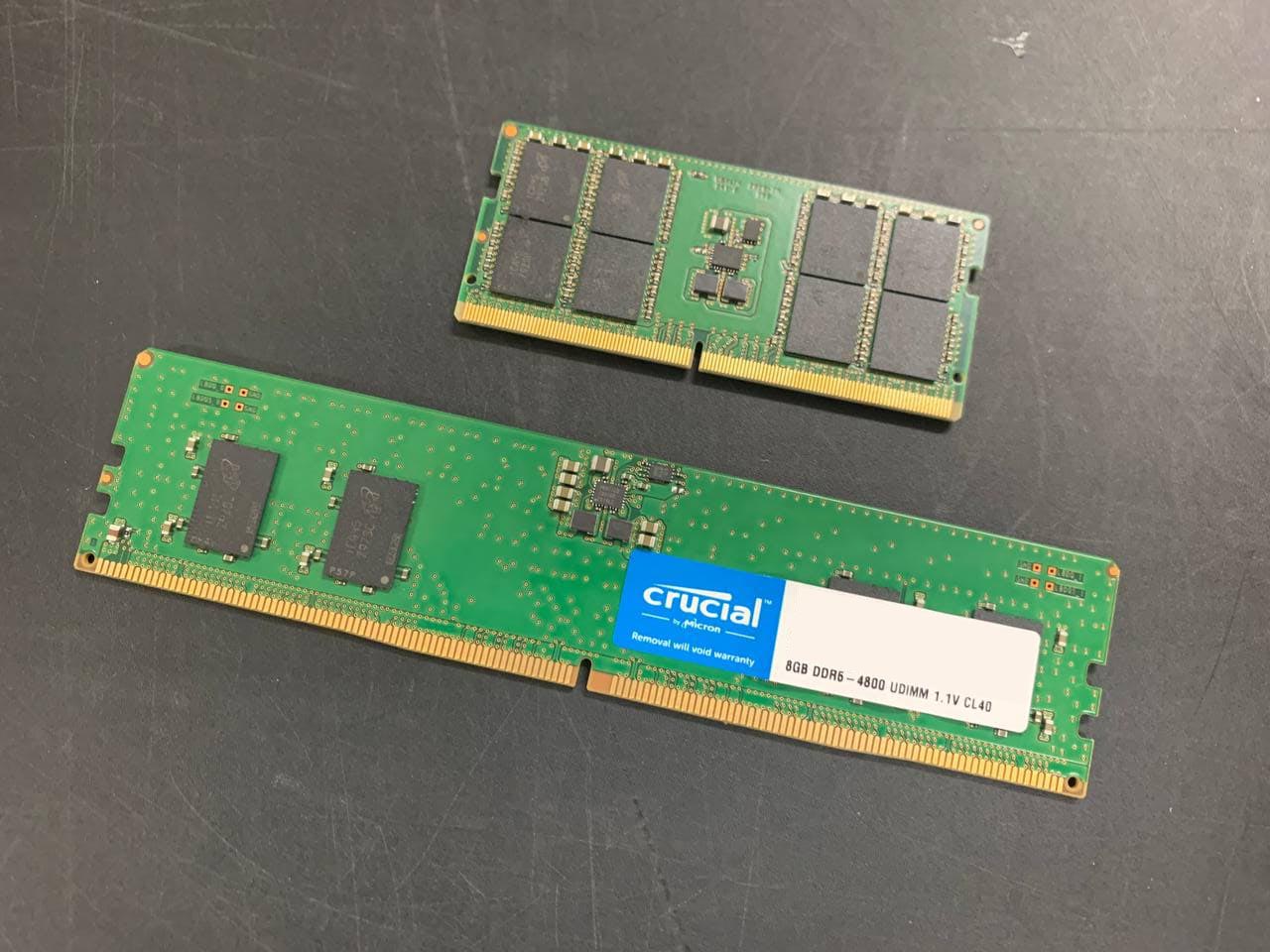It looks like DDR5 RAM is almost ready for purchase. Chinese news outlet XFastest this week shared photographs of the first retail DDR5 memory modules from Crucial, showing the components in retail packaging, just aching to hit shelves.
As seen in the images, the publication blocked out the information on the modules’ sticker, reportedly so Crucial can’t trace the modules.
Crucial’s memory modules check in at DDR5-4800, but that’s just the start. DDR5 is projected to hit 6,400 MHz, with some vendors already aiming for 10,000 MHz. Preliminary RAM benchmarks show DDR5 with massive uplifts in synthetic workloads, so it’ll be interesting to evaluate DDR5’s real-world benefits and how it stacks up to the best RAM kits on the market today.
The DDR5 sticks in question sport a CAS Latency (CL) value of 40 and a DRAM voltage requirement of 1.1V. The UDIMM has a capacity of 8GB, while the SO-DIMM sports a whopping 32GB.
As you can see in the pictures, Crucial DDR5 memory modules comes with a boring, green PCB. So we expect these to be budget offerings for value-conscious shoppers and OEMs. Don’t worry though: High-end memory modules will likely arrive with fancy heat spreaders and tacky RGB illumination.
Crucial’s memory modules utilize integrated circuits (ICs) from Micron. The UDIMM module features a one-side design with four 2GB memory ICs, while the SO-DIMM module sticks to a dual-sided design with up to 16 memory ICs of the same size. According to JEDEC’s specification, DDR5 is expected to push the envelop in terms of capacity. The expected ceiling is 128GB per module.
Currently, we know about two processor families that will potentially support DDR5. On the Blue Team, we have Intel’s upcoming 12th Generation Alder Lake hybrid desktop processors that are scheduled to hit the market in the second half of this year. For the Red Team, Zen 4 has been rumored to support DDR5 memory, which would make sense, since Zen 3 will be the last microarchitecture to go through the AM4 CPU socket. It wouldn’t be surprising to see AMD use the new AM5 socket to exploit DDR5.
AMD’s Zen 4 isn’t expected until next year, so Intel might beat AMD to DDR5 adoption as revenge for the latter embracing PCIe 4.0 first on a mainstream platform.
